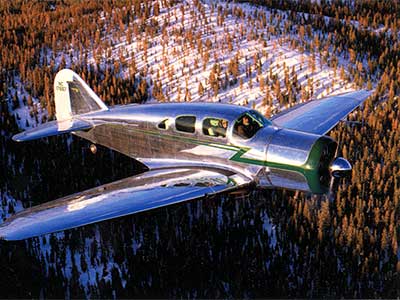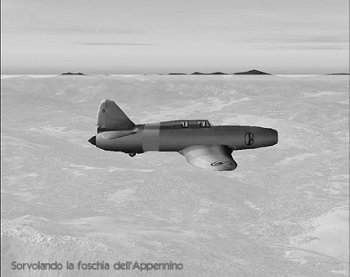Install the app
How to install the app on iOS
Follow along with the video below to see how to install our site as a web app on your home screen.
Nota: This feature may not be available in some browsers.
Je gebruikt een verouderde webbrowser. Het kan mogelijk deze of andere websites niet correct weergeven.
Het is raadzaam om je webbrowser te upgraden of een alternatieve webbrowser te gebruiken.
Het is raadzaam om je webbrowser te upgraden of een alternatieve webbrowser te gebruiken.
FORUMLEDEN met NOSTALGIE......"vreemde" kisten
- Topicstarter steffe
- Startdatum
- Status
- Niet open voor verdere reacties.
P
Pjotrrr
Guest
Dat scheelde weinig, de oudjes doen het nog best 
Drie man tegelijk op 11:18...Maar Jan was de eerste..............
Drie man tegelijk op 11:18...Maar Jan was de eerste..............
P
Pjotrrr
Guest
The Bell X-14 (Bell Type 68) was an experimental VTOL aircraft flown in the United States in the 1950s. The main objective of the project, was to demonstrate horizontal, vertical takeoff, hover, transition to forward flight, and vertical landing.

http://en.wikipedia.org/wiki/Bell_X-14

http://en.wikipedia.org/wiki/Bell_X-14
P
Pjotrrr
Guest
Ik vermoedde al dat Jan het je wel gunde.
Wat mij betreft mag Jan ons nu trakteren (en anders weet ik er wel een)...
Wat mij betreft mag Jan ons nu trakteren (en anders weet ik er wel een)...
Eerst nog even over de vorige kist. Eigenlijk vind ik de verhaaltjes erbij nog interessanter dan de kisten zelf:
Bell X-14
Built under a US Air Force contract, the X-14 used a planar array of diverter vanes to vector the exhaust of two Armstrong Siddeley ASV8 Viper engines (1,750 lb thrust each) at the center of gravity (c.g.). The vanes could be rotated to direct the exhaust from vertical to nearly horizontal. The 25 ft fuselage and tail were from a Beech T-34; the 34 ft span wing was from a Beech Bonanza. The lack of a ejection seat limited hover testing to very low and very high altitudes. The gross weight was originally only 3,100 lb. The landing gear had to be lengthened when the phenomenon of suck-down was first discovered. Engine gyroscopic effects and exhaust gas reingestion were also encountered. First hover flight was achieved on 17 February 1957; first transition was made on 24 May 1958. The Viper engines were replaced with higher power GE J85 engines when it was transferred to NASA in 1960. It was eventually fitted with a digital fly-by-wire control system and continued flying as a V/STOL testbed until 1981!
De nieuwe opgave:

[edit] Er stond eerst een ander plaatje van dezelfde kist, maar daar stond wel heel duidelijk op de staart wat het is [/edit]
Bell X-14
Built under a US Air Force contract, the X-14 used a planar array of diverter vanes to vector the exhaust of two Armstrong Siddeley ASV8 Viper engines (1,750 lb thrust each) at the center of gravity (c.g.). The vanes could be rotated to direct the exhaust from vertical to nearly horizontal. The 25 ft fuselage and tail were from a Beech T-34; the 34 ft span wing was from a Beech Bonanza. The lack of a ejection seat limited hover testing to very low and very high altitudes. The gross weight was originally only 3,100 lb. The landing gear had to be lengthened when the phenomenon of suck-down was first discovered. Engine gyroscopic effects and exhaust gas reingestion were also encountered. First hover flight was achieved on 17 February 1957; first transition was made on 24 May 1958. The Viper engines were replaced with higher power GE J85 engines when it was transferred to NASA in 1960. It was eventually fitted with a digital fly-by-wire control system and continued flying as a V/STOL testbed until 1981!
De nieuwe opgave:

[edit] Er stond eerst een ander plaatje van dezelfde kist, maar daar stond wel heel duidelijk op de staart wat het is [/edit]
P
Pjotrrr
Guest
1939 Spartan Executive
This flawless work of art has won numerous Grand Champion awards. Only 32 of these beauties were ever built. This one is serial number 17 of the production line. Only six are currently flying. The original owner was the Texas company (now Texaco Oil). It was lend-leased to the RAF during WWII.

This flawless work of art has won numerous Grand Champion awards. Only 32 of these beauties were ever built. This one is serial number 17 of the production line. Only six are currently flying. The original owner was the Texas company (now Texaco Oil). It was lend-leased to the RAF during WWII.

P
Pjotrrr
Guest
Campini-Caproni CC-2
What Campini did in his thermojet was place a piston engine within an enclosed duct, as illustrated above. The mechanical energy of this engine was used to turn three propellers placed behind the engine. Two of these ducted propellers were used to compress the incoming air while the third helped to direct the flow and minimize turbulence within the engine. This compressed air was mixed with fuel by means of a ring of kerosene injectors in the aft portion of the duct. The mixture was then combusted and exhausted out of the nozzle at high speed to produce thrust. Conceptually, the engine can almost be thought of as adding an afterburner to a piston-powered propeller engine.
Next:

De eerste jet....
What Campini did in his thermojet was place a piston engine within an enclosed duct, as illustrated above. The mechanical energy of this engine was used to turn three propellers placed behind the engine. Two of these ducted propellers were used to compress the incoming air while the third helped to direct the flow and minimize turbulence within the engine. This compressed air was mixed with fuel by means of a ring of kerosene injectors in the aft portion of the duct. The mixture was then combusted and exhausted out of the nozzle at high speed to produce thrust. Conceptually, the engine can almost be thought of as adding an afterburner to a piston-powered propeller engine.
Next:

De eerste jet....
Voor Jan, die de verhaaltjes zo leuk vindt:bdoets zei:Heinkel He 178

"Heinkel He 178" buvo kuriamas kaip bandymų laboratorija turboreaktyviniam varikliui "HeS 3B". Pirmą kartą lėktuvas pakilo 1939 metų rugpjūčio 27 dieną ir tapo pirmuoju pakilusiu lėktuvu su turboreaktyviniu varikliu. Nepaisant techninio gedimo, dėl kurio važiuoklės nepavyko įtraukti, skrydis buvo sėkmingas. Vėlesnių skrydžių metu buvo sukaupti tyrimų duomenys, kurie pasitarnavo kuriant "He 280".
P
Pjotrrr
Guest
Danny Mulders
verslagschrijvers
hmmm, oogt als een zwaan :?
Pjotrrr,
je bent wel sterk in het raden van stilstaande plaatjes....; :wink: :wink: :wink: :wink: :wink: :wink:
maar wat met de bewegende plaatjes??????
kijk eens.....
http://www.modelbouwforum.nl/phpBB2/viewtopic.php?t=44045&start=195
een uitdaging !!!!!!!...... 8) 8) 8) 8) 8) 8)
tewaar dat een kollega je weer voor is...... :wink:
groeten
steffe
je bent wel sterk in het raden van stilstaande plaatjes....; :wink: :wink: :wink: :wink: :wink: :wink:
maar wat met de bewegende plaatjes??????
kijk eens.....
http://www.modelbouwforum.nl/phpBB2/viewtopic.php?t=44045&start=195
een uitdaging !!!!!!!...... 8) 8) 8) 8) 8) 8)
tewaar dat een kollega je weer voor is...... :wink:
groeten
steffe
Ik zal een hint geven.
Het toestel is ontworpen door een Fransman en gebouwd door een Amerikaan die het patent van de gebroeders Wright wilde aanvechten.
De naam bestaat uit de naam van de Fransman, de Amerikaan, en een vogelnaam (nee niet Swan...)
Ik zal eerlijk zeggen dat als ik de volledige naam bij Google invul ik maar één vermelding krijg... dus misschien is-ie wel te moeilijk...
Bart
Het toestel is ontworpen door een Fransman en gebouwd door een Amerikaan die het patent van de gebroeders Wright wilde aanvechten.
De naam bestaat uit de naam van de Fransman, de Amerikaan, en een vogelnaam (nee niet Swan...)
Ik zal eerlijk zeggen dat als ik de volledige naam bij Google invul ik maar één vermelding krijg... dus misschien is-ie wel te moeilijk...
Bart
- Status
- Niet open voor verdere reacties.





